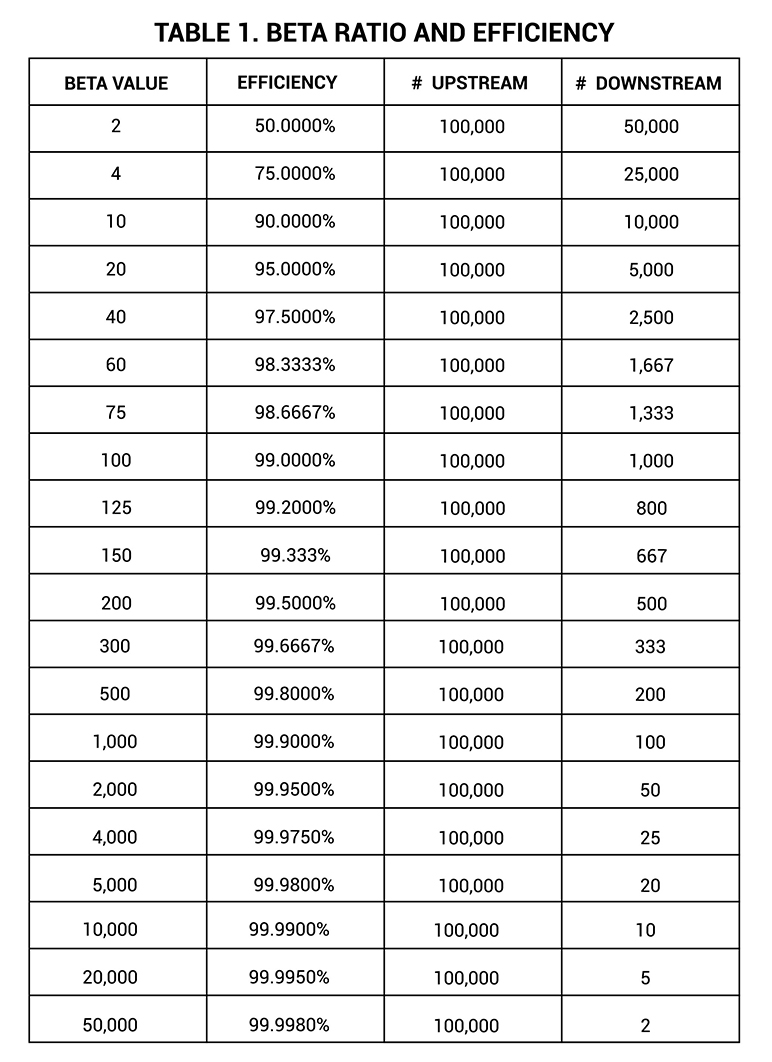Absolute VS Nominal Filters
Basics of waterborne diseases
Bubble point definition
Chemical adsorption of carbon
Granular activated carbon fact sheet
How do carbon filter work?
Water Softener – How do they work? – FAQs
What is a filter Beta Ratio
What is Osmosis and Reverse Osmosis
Water Glossary
What is Ultrafiltration
What is Ultraviolet water treatment?
Beta Ratio equals the ratio of the number of particles of a minimum given size upstream of the filter to the number of particles of the same size and larger found downstream. Simply put, the higher the Beta Ratio the higher the Capture Efficiency of the filter.
Filter ratings are an often-misunderstood area of contamination control. The most commonly used rating is the Beta Ratio, which is defined as the ratio of the number of particles upstream of the test filter versus the number downstream, greater than a given size. Using the Beta Ratio, a 5 micron filter with a Beta 1000 Rating, will have on average 1000 particles larger than 5 micron upstream of the filter for everyone 5 micron or greater particle downstream.
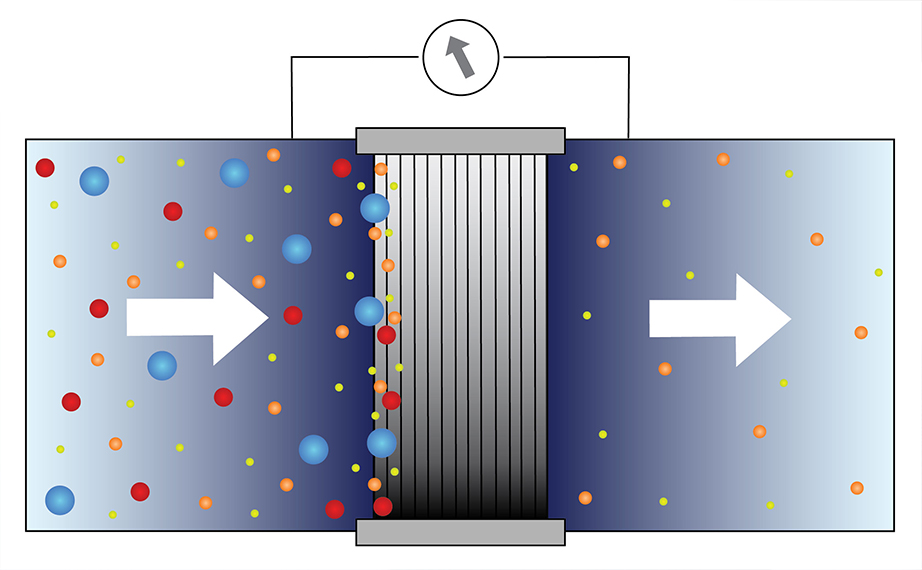
The efficiency of the filter can be calculated directly from the Beta Ratio since the % efficiency is simply (beta-1)/beta x 100. A Beta 1000, 5-micron filter is thus said to be 99.99% efficient at removing 5 micron and larger particles.
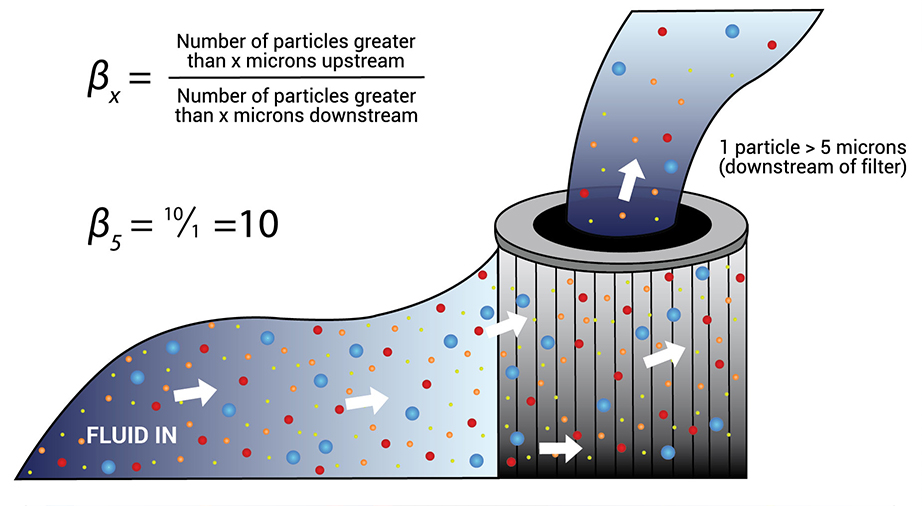
Caution must be exercised when using Beta Ratios since they do not take into account field operating conditions such as pressure surges and changes in temperature, which can affect real life performance. A filter’s Beta Ratio also does not give any indication of its dirt holding capacity, the total amount of material that can be trapped by the filter throughout its life, nor does it account for how the capture efficiency changes over time. Nevertheless, Beta Ratios are an effective way of gauging the expected performance of a filter.
The ISO standard for Multi-pass filter testing (ISO 16889) has changed to require filter manufacturers to determine the average particle sizes which yield Beta Ratios equal to 2, 10, 75, 100, 200, and 1000, again using the multi-pass test stand approach. The new standard gives a better interpretation of a filter’s overall performance.
Of course, regular monitoring of fluid cleanliness using ISO particle counting should be used to determine the efficiency of the filter in actual field conditions.
Measured samples of the fluid are then taken at timed intervals from both the downstream and the upstream of the filter at the same time, particles are measured and counted by electronic means using automatic particles counters. From these measurements a Beta ratio (b) is devised by dividing the number of particles of a particular size in the upstream flow by the number
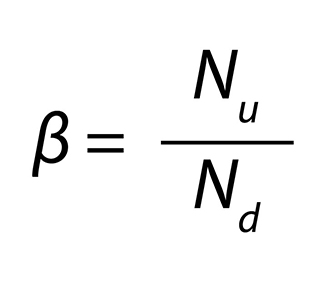
where bx is the beta ratio for contaminant larger than x mm
Nu is the number of particles larger than x mm per unit of volume upstream
Nd is the number of particles larger than x mm per unit of volume downstream.
The beta ratio is a sign of how well a filter controls particulate: for example, if one out of every two particles (> x mm) in the fluid pass through the filter, the beta ratio at x mm is 2, if one out of every 200 of the particles (> x mm) pass through the filter the beta ratio is 200. Thus, filters with a higher beta ratio hold more particles and have higher efficiency. Efficiency for a given particle size (Ex) can be derived directly from the beta ratio by the following equation:
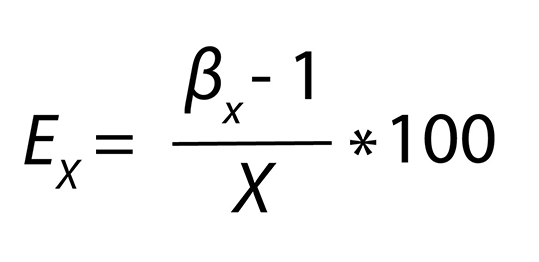
The following table lists some selected beta ratios and the correspondent efficiency:
